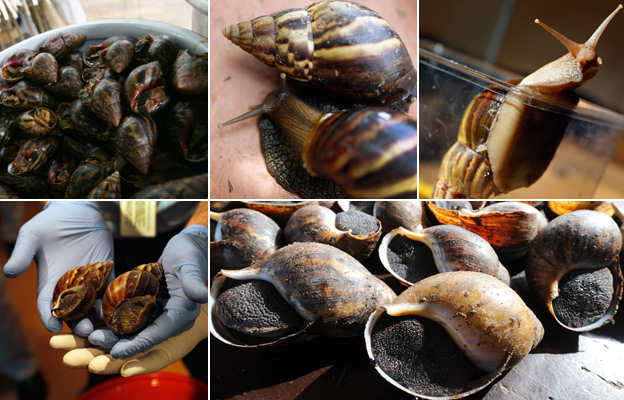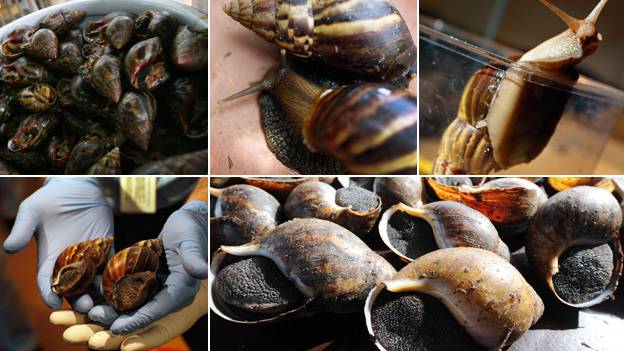African snail: Deadly invasion in South America
Source: bbc.co.uk

An African snail appears to be on a campaign to conquer central and southern America. But how much mess can a mollusc make - and are they really deadly to humans?
At an average size of just a couple of inches long, the so-called giant African land snail (achatina fulica) probably wouldn’t qualify for a starring role in a 1950s horror film, but it is still wreaking havoc in several South American countries and the US state of Florida.
The threat lies in its ability to multiply at enormous speed. The snails reach maturity after a year and can then produce 200-300 eggs a month, leading to huge infestations within a short space of time. The snails, which are native to East Africa, appear on the International Union for Conservation of Nature’s list of the world’s top 100 invasive species.
In one Colombian town alone, Buenaventura, more than eight tonnes of snails have been collected since an invasion began two years ago. In Ecuador the problem is so widespread that they have been found in half of the country’s 24 provinces, including the Galapagos Islands.
In the fields, they are an agricultural nuisance. In the cities, they clutter up the sidewalks and rip the stucco off houses. Such is the density with which they congregate at the height of an invasion, that they have even been known to cause slicks on highways.
But the snails are not just an unsightly pest. They can also kill.
In tropical regions, giant African snails, as well as other types of slugs and snails, can carry a nematode - a kind of parasite - called the rat lungworm. These minute worms, if ingested, enter the circulation and travel to the brain, where they can lead to eosinophilic meningitis.
Symptoms range from headaches to tingling, numbness and involuntary flexing of muscles. In severe cases, sufferers may go into coma and die.
[...]
Read the full article at: bbc.co.uk






















